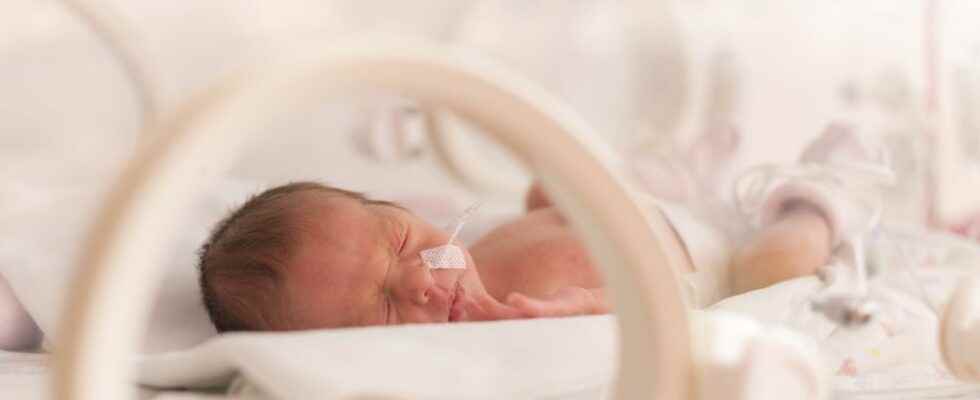If the consequences of endocrine disruptors on reproduction are not unknown, a study has confirmed for the first time the direct impact of exposure to phthalates during pregnancy on premature births. Results that confirm the need to limit their use in pregnant women.
“Exposure to phthalates during pregnancy is a risk factor for preventable preterm birth.”. This is the conclusion of a study published in the specialist journal JAMA Pediatrics last July. So, should we (totally) prohibit access to phthalates to all pregnant women? The task is not so simple: these plasticizing molecules are present almost everywhere, from food packaging to cosmetic products, including toys and cleaning products.
“With 60,000 children born every year before eight and a half months of pregnancy, there is an urgent need, if only to relieve pediatric services.”told the Parisian André Cicolella, President of the Health Environment Network (RES). Association at the origin of the elimination of bisphenol A in baby bottles in France, the RES now calls for the launch of a flash mission by the Ministry of Health, like what was done for the crisis of emergency and pediatric services. “Even small reductions in a large population could have positive impacts on mothers and children.”says the association in a communicated.
The number of premature births in France is estimated at 60,000. Reduce the #prematurity of 7200 cases per year it is possible! Urgency to reduce contamination by #phthalatesthese everyday endocrine disruptors! #MISSIONFLASH⚡@SOSPremahttps://t.co/BWqVzi6Wfj
— Health Environment Network (@RES_Env_Sante) November 3, 2022
And the results of the July study were long overdue. Co-authored by 56 scientists from 36 universities and US federal agencies, it analyzed the results of 16 follow-up campaigns of pregnant women who gave birth between 1983 and 2018 in the United States. EUnited States, a total of 6,045 women. Phthalate metabolites were searched for in their urine. “Most phthalate metabolites were detected in more than 96% of participants”say the researchers.
“Exposure to four of 11 phthalates found in pregnant women was associated with 14-16% higher chance of having a preterm birth. The most consistent results were for exposure to a phthalate commonly used in personal care products like nail polish and cosmetics.”says the study.
Eavoid 7,200 premature births in France
But good news, it is still possible to reduce prematurity, by reducing exposure to phthalates. Indeed, reducing exposure to these phthalates by 50% would reduce births before the end of pregnancy by 12% on average. “Transposed to France, this would avoid 7,200 premature birthswhich would be an obvious health gain for everyone.”insists André Cicolella.
“The American publication on the prematurity-phthalates link shows that results can be obtained very quicklyaffirms for its part the association Réseau Environnement santé. As phthalates are eliminated daily by the body and the main sources of contamination are known, it is possible to quickly achieve a significant reduction and consequent health gains”she concludes.
Sources:
- Associations Between Prenatal Urinary Biomarkers of Phthalate Exposure and Preterm Birth, JAMA PediatricsJuly 11, 2022
- Prematurity and phthalates: the RES requests a flash mission, Health Environment Network, November 2, 2022
- Premature babies: the role of endocrine disruptors clearly established, The ParisianNovember 7, 2022
